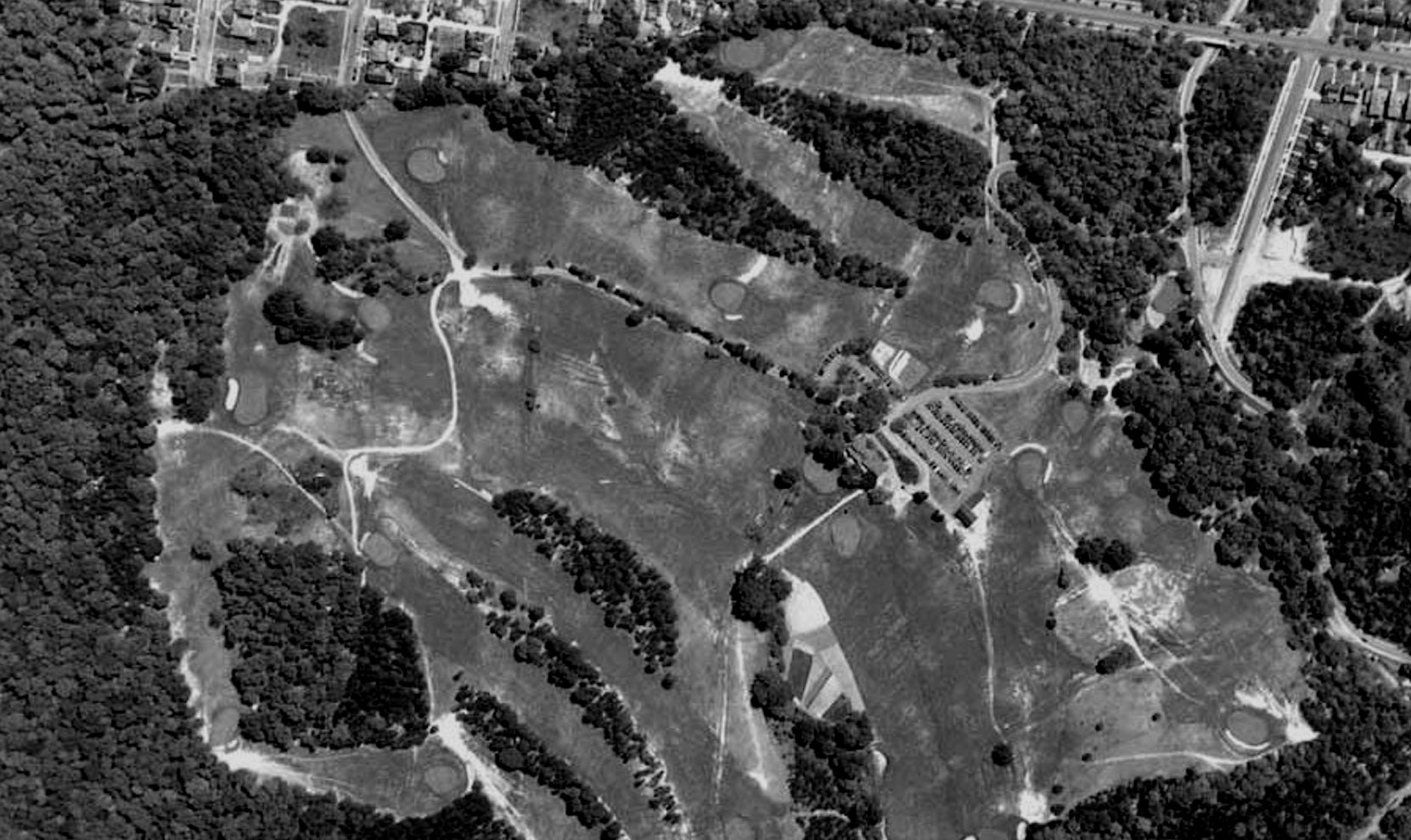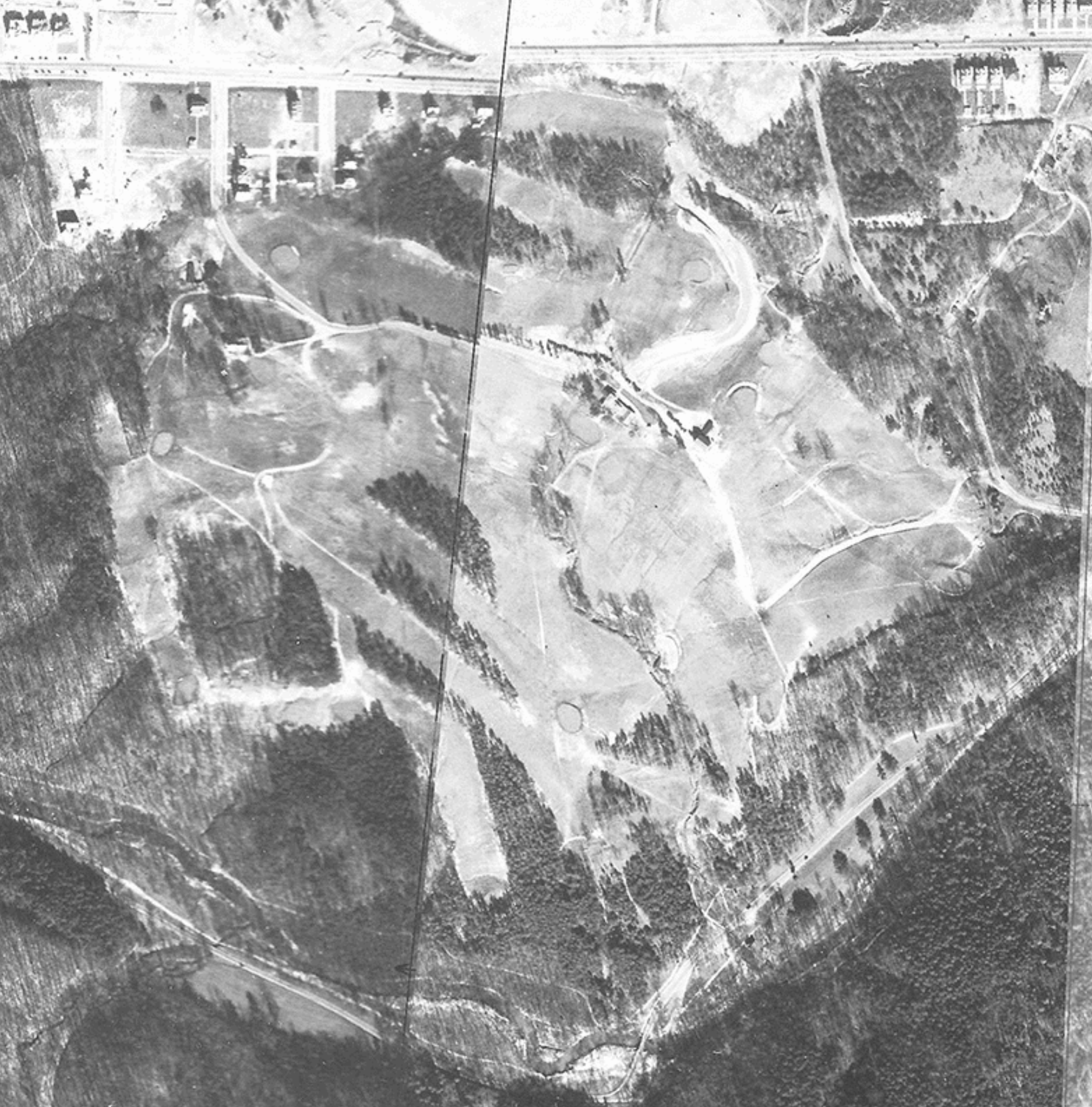ROCK CREEK PARK GOLF
A brief history of Rock Creek Park Golf
The story of public golf in Washington, DC begins at Rock Creek Park. In 1906, officials announced they would build the city’s first public golf course and chose Rock Creek Park as its location. Over the following three years, construction began and nine holes were built, but ultimately the course was never fully completed due to insufficient funds and a lack of Congressional support. In 1917, after this initial failure to provide lasting public golf in the nation’s capital, East Potomac Park’s courses began construction. After opening, golf’s popularity amongst Washingtonians grew. With this increased popularity not only came more construction at East Potomac Park, but a plan to bring golf back to Rock Creek Park.
Aerial from 1927 showing completed 18-hole course from William Flynn | Courtesy: National Park Service
In 1921, Lieutenant Colonel Clarence O. Sherril, requested $50,000 from Congress to build a new golf course in Rock Creek Park, north of Military Road and west of 16th Street. This site was near but distinct from that of the original 1906 course. It had been cleared of trees over the preceding decades, being used first as farmland and then as a summer camp for underprivileged children, prior to being purchased by the government. At this time, it was described as “overgrown with brambles and poison ivy as to be entirely worthless” by Colonel Sherril in a letter to President Woodrow Wilson in 1921. William S. Flynn (Shinnecock Hills, Merion Golf Club) was chosen as architect the following year and spent two days surveying the rolling site to determine a routing for nine holes. On May 23, 1923, President Warren G. Harding was on-hand at the course’s official opening.
As golf continued to boom in Washington, DC, Flynn was hired to expand the golf course to 18 holes in 1924. Following two years of planning, construction, and grow-in, Flynn’s 18 hole course opened. In order to create a cohesive layout, Flynn changed a number of aspects of his original 9-hole design, though some corridors were reused from the 1923 design. The 18-hole course was officially opened on April 3, 1926.
Over the ensuing decades, Flynn would return to the property to lengthen the course, rebuild greens, add a practice green, and add a 3-hole pitch and putt where golfers would “pass the time” before teeing off.
Major changes came to Rock Creek Park Golf from 1946 - 1958 when Military Road was widened and rerouted through part of the existing golf course. As a result, three holes were removed and rebuilt and several others changed by architect, William F. Gordon. The bulk of these changes were limited to the first nine, but combined with deteriorated conditions on the second nine, Flynn’s historic 18-hole design had changed to a critical degree. The ensuing decades were marked by continued deferred maintenance resulting in poor turf conditions, nearly unplayably narrow hole corridors, and a clubhouse that, after being built in the mid-1960s, grew increasingly underutilized and lacking modern amenities.
Despite this, the facility remained a pillar of the community with widespread support. In 1997, the local community universally opposed a plan to close the golf course, and the National Park Service (NPS) instead began the process of seeking solutions. Nearly 25 years later, the NPS published a Request for Proposals for a long-term lease of the facility, along with Langston Golf Course and East Potomac Golf Links, aimed at providing an improved assets inspired by the facility’s rich architectural heritage and with an emphasis on community. National Links Trust ultimately was awarded this lease and has set off on the Nation’s Capital Project to begin this long-term project.
Rock Creek Park Golf Through the Years
Photos courtesy of the National Park Service











